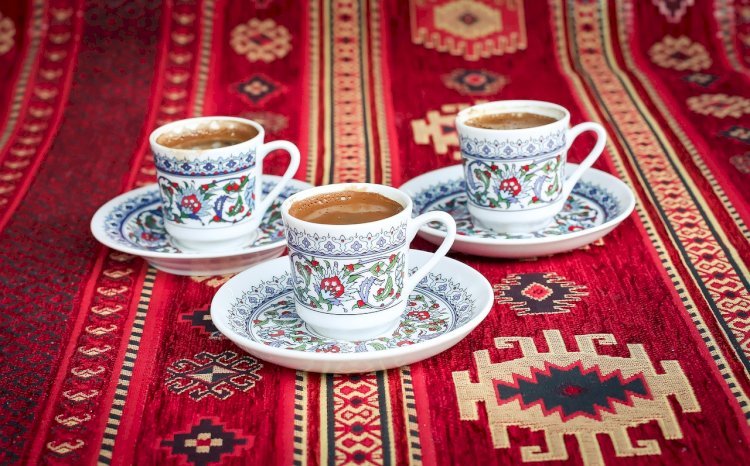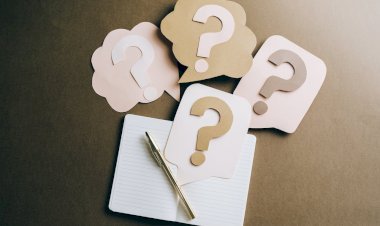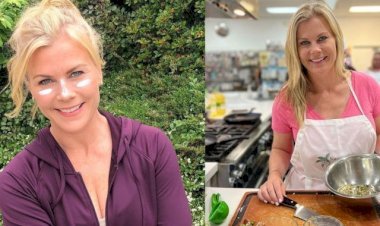Kitchen Math Made Easy: How Many Tablespoons in 1/4 Cup (and Why It Matters)
How many tablespoons in 1/4 cup? Learn the exact conversion, quick charts, and pro cooking tips to make measuring easier and recipes more accurate.

Cooking and baking often feel like a science experiment — one small mistake in measurement can turn a fluffy cake into a dense brick or a savory dish into a salty disaster. One of the most common questions home cooks ask is: How many tablespoons are in 1/4 cup?
The quick answer: 1/4 cup = 4 tablespoons in U.S. measurements.
But understanding why this matters — and how to apply it in real recipes — can save you time, stress, and wasted ingredients. This guide explains not only the conversion but also offers practical kitchen tips, real-world examples, and international variations.
Understanding Kitchen Measurements
In the U.S., the customary system of kitchen measurements is based on teaspoons, tablespoons, cups, pints, quarts, and gallons. Here’s the relationship between some of the most common units:
-
1 tablespoon = 3 teaspoons (~15 ml)
-
1 cup = 16 tablespoons (~240 ml)
-
1/2 cup = 8 tablespoons (~120 ml)
-
1/4 cup = 4 tablespoons (~60 ml)
That means if you don’t have a 1/4 cup measure handy, you can substitute it with 4 tablespoons or 12 teaspoons.
The Simple Conversion: 1/4 Cup to Tablespoons
The math is straightforward:
-
1 cup = 16 tablespoons
-
Divide by 4 → 1/4 cup = 4 tablespoons
This makes it easy when scaling recipes or substituting tools. For instance:
-
Half of 1/4 cup = 2 tablespoons
-
Double 1/4 cup = 8 tablespoons (or 1/2 cup)
U.S. vs. International Conversions
Understanding different measurement systems is very important when following recipes from around the world. A U.S. tablespoon is not the same as an Australian or UK tablespoon, which means a recipe can change in texture or taste if the wrong measurement system is used. Many baking failures happen simply because the recipe uses one system, but the cook measures using another. Always check whether the recipe is U.S., UK, or Australian before measuring 1/4 cup or tablespoons.
Measurements vary slightly around the world:
-
U.S. Tablespoon ≈ 14.79 ml
-
UK Tablespoon ≈ 15 ml
-
Australian Tablespoon = 20 ml
So if you’re using a British or Australian recipe, 1/4 cup might not perfectly equal 4 U.S. tablespoons. To be precise, always check the measurement system your recipe uses.
Why Accurate Measurements Matter in Cooking and Baking
Accurate measurement also matters because different ingredients have different densities. For example, 1/4 cup of oats weighs much less than 1/4 cup of honey. Even flour can give different results depending on how it is scooped or packed. When you understand simple conversions like 1/4 cup = 4 tablespoons, you automatically make more accurate choices that improve the texture and taste of your recipes.
Measurements are more than numbers — they affect the science of food:
-
In Baking: Too much flour makes bread dense, while too little causes collapse.
-
In Sauces: Too much liquid thins the texture, too little makes it overly thick.
-
In Spices: A little extra salt or chili powder can overwhelm a dish.
For example:
-
A cookie recipe calling for 1/4 cup butter = 4 tablespoons. Adding 5 instead could change the texture, making cookies spread too thin.
-
A cake recipe needing 1/4 cup sugar = 4 tablespoons. Using only 3 may leave it bland or dry.
Read Also: Maraca Camera Brand Review: Features, Models & Why Photographers Love It
Conversion Chart for Quick Reference
These conversions are also helpful when adjusting recipes for healthier cooking. For example, if a recipe uses 1/4 cup of oil (4 tablespoons), you can remove 1 tablespoon to reduce calories without affecting the flavor too much. Knowing basic kitchen math helps you make smarter decisions when modifying recipes for diet or taste preference.
Here’s a handy kitchen conversion chart you can bookmark or print:
| Measurement | Tablespoons | Teaspoons | Milliliters | Common Use |
|---|---|---|---|---|
| 1 cup | 16 tbsp | 48 tsp | ~240 ml | Soups, liquids |
| 3/4 cup | 12 tbsp | 36 tsp | ~180 ml | Flour, rice |
| 1/2 cup | 8 tbsp | 24 tsp | ~120 ml | Sugar, butter |
| 1/3 cup | 5 tbsp + 1 tsp | 16 tsp | ~80 ml | Oils, sauces |
| 1/4 cup | 4 tbsp | 12 tsp | ~60 ml | Nuts, chocolate chips |
| 1 tbsp | 3 tsp | — | ~15 ml | Salt, spices |
Practical Applications in the Kitchen
-
Scaling Recipes
-
If a soup recipe calls for 1/4 cup of cream but you want to double it, just add 8 tablespoons.
-
-
Substituting Tools
-
No 1/4 cup measure? Use 4 tablespoons instead.
-
-
Diet & Portion Control
-
If a sauce calls for 1/4 cup olive oil (4 tablespoons), cutting it down to 3 tablespoons can save ~120 calories without changing flavor too much.
-
-
International Recipes
-
For metric recipes, use ~60 ml in place of 1/4 cup.
-
Tips for Accurate Measurement
-
Use Standard Tools: Invest in stainless steel or BPA-free measuring spoons and cups.
-
Separate Dry vs. Liquid Tools: Dry cups for flour/sugar, liquid cups with spouts for oils/water.
-
Level Off Dry Ingredients: Use a knife to scrape off excess for precise measurements.
-
Check at Eye Level: Always measure liquids on a flat surface.
Common Mistakes to Avoid
-
Guessing Instead of Measuring — “eyeballing” often leads to recipe disasters.
-
Using Non-Standard Tools — soup spoons or mugs are not accurate substitutes.
-
Ignoring Ingredient Type — flour should be fluffed before measuring, brown sugar packed, and liquids poured at eye level.
Helpful Kitchen Tools
-
Digital Kitchen Scale: Perfect for baking, since weight is more accurate than volume.
-
Conversion Chart Magnet: Keep one on your fridge for quick reference.
-
Nested Measuring Cups/Spoons: Essential for all dry and liquid measurements.
Read Also: Catherine the Great Furniture: A Glimpse into Imperial Splendor
FAQs
1. What if I only have teaspoons?
Since 1 tablespoon = 3 teaspoons, 1/4 cup (4 tablespoons) equals 12 teaspoons.
2. Can I use a kitchen scale instead?
Yes! Weighing ingredients is the most precise method, especially for baking.
3. Are liquid and dry cups the same?
No. Liquid cups are designed with spouts for easy pouring, while dry cups are meant to be filled and leveled.
4. Why do recipes sometimes still fail with exact measurements?
Other factors — like oven calibration, mixing technique, or ingredient freshness — also impact results.
5. Are U.S., UK, and AU tablespoons interchangeable?
Not exactly. U.S. = ~14.79 ml, UK = 15 ml, Australia = 20 ml. Always check which system your recipe uses.
Conclusion
Knowing that 1/4 cup = 4 tablespoons may seem simple, but it’s a foundational kitchen skill that makes recipes easier, more accurate, and less stressful. From scaling recipes to substituting tools, this conversion helps you cook with confidence.
By using the right tools, following tips for precision, and understanding measurement systems worldwide, you’ll avoid common mistakes and ensure every dish turns out delicious.
So the next time your recipe calls for 1/4 cup, you’ll know instantly: that’s 4 tablespoons (or 12 teaspoons, or ~60 ml).
Read Also: Influencers Gone Wild: When Fame Turns Into Chaos

 alissaperry
alissaperry 






















